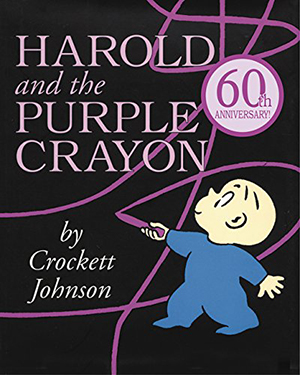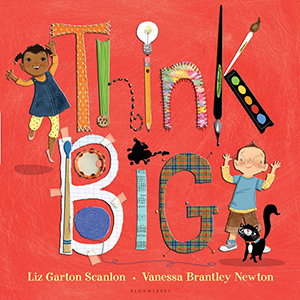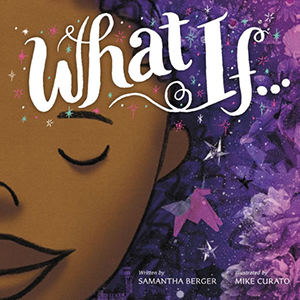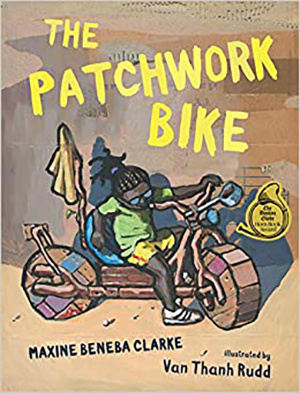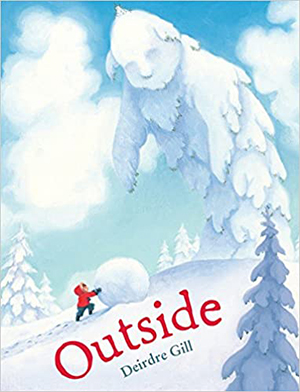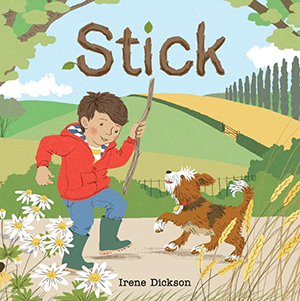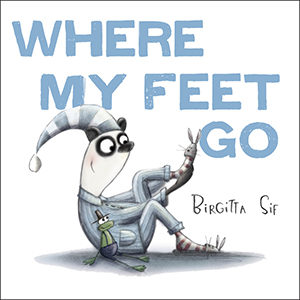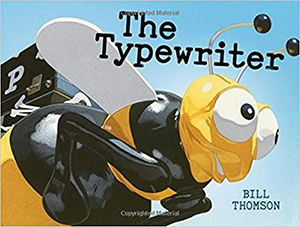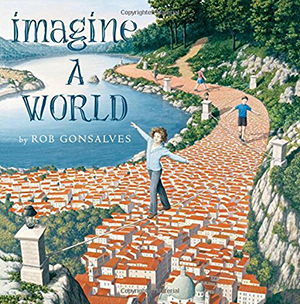Nurturing creativity & imagination with picture books
Posted on January 28, 2021 at 6:00 am

BY MELISSA RHOADES
Children are naturally creative and tend to display expansive imaginations. It’s even a stereotype that our imaginations blossom when we’re young and get socialized out of us as we grow into adulthood. Pablo Picasso is famously quoted as saying:
“Every child is an artist. The problem is staying an artist when you grow up.”
Similarly, Ursula Le Guin has been quoted as saying
“The creative adult is the child who survived.”
But it’s not a given that children will develop their creative imaginations under any circumstances. It’s important that adults nurture this creative spirit. Ideally, that nurturing will start very early in a child’s life.
Imaginative play, including playing pretend, begins to occur at toddler age. So does the use of materials, such as paper, paint, crayons, blocks, etc., to create novel things.
Arts and crafts even help develop scientific thinking by encouraging toddlers to distinguish different properties of materials—glue is sticky, paper is not—and notice cause and effect—glue causes the string to stay on the paper.
By preschool age, playing pretend helps children develop in several key ways. It:
- Allows them to try out social roles
- Develops their problem-solving skills
- Provides an outlet for dealing with their emotions
- Helps them practice self-control
So how can caregivers encourage this vital imaginative play?
Kids Health, a non-profit resource that provides doctor-reviewed advice, offers a list for encouraging and nurturing the imaginations of children in their article “The Magic of Play: How It Inspires & Aids Early Development.”
Going along with kids’ imaginations is on that list. When young ones leap through the air and say they’re flying, hold back from telling them they’re only jumping. Instead, feed their fantasy by saying things like “Wow, you’re so high up!” and asking open-ended questions like “What can you see on the ground?” Even better, start flying with them.
Reading to the children in your care is also on that list. Kids Health suggests that, when reading, also ask open-ended questions such as “If you were the caterpillar, what would you eat?” and “What do you think will happen next in the story?” This not only encourages imagination but promotes language skills and fosters an interest in books.
Open-ended questions can also turn routine tasks, like folding laundry and eating dinner, into fun and creative learning experiences. Have a look at Everyday Language and Learning Opportunities (ELLO) for ideas on how to do this. For Pre-K children, resources in our Getting Ready for Kindergarten web pages can also help.
When reading, any narrative that engages young children can help spark their imagination. The Library District offers more than 12,000 picture books to choose from.
Picture books that specifically celebrate creativity and imagination are some of my favorites. Harold and the Purple Crayon, by Crockett Johnson, is a beloved classic example that I grew up with. But dozens of recent publications celebrate children’s inventiveness and expression. Here’s a small sampling.
Think Big, written by Liz Garton Scanlon and illustrated by Vanessa Brantley Newton, follows a classroom of children as they explore art in a variety of forms, from painting, sculpture, music, and theater to photography, cooking, and sewing. With a pleasant rhyme scheme and just four words per page, this book is simple enough for toddlers but includes vocabulary complex enough to keep preschoolers engaged.
What If …, written by Samantha Berger and illustrated by Mike Curato, also looks at various art forms, but with a clever twist. The protagonist imagines what types of art she would create if she didn’t have certain art supplies. In the end, she concludes that “If I had nothing, but still had my mind… There’d always be stories to seek and to find.” Beautiful illustrations and the focus on creativity as a universally accessible tool make this one of my absolute favorite Storytime books for preschoolers.
The Patchwork Bike, written by Maxine Beneba Clark and illustrated by Van Thanh Rudd, focuses more directly on the power of creativity amid scarcity. In an unnamed low-income country, the protagonist and her brothers live in a “mud-for walls” home and play in the “no-go desert, under the stretching out sky.” Readers are treated to particulars about the siblings’ homemade bicycle that goes “winketty wonk” through the fields and “bumpety bump” through the village. Fluidly rendered illustrations perfectly match this celebration of ingenuity.
Outside, written and illustrated by Deirdre Gill, starts with another type of scarcity: the lack of a playmate. In this story, a little boy’s older brother is too glued to the computer to accompany him outside for a romp in the snow. So the little boy creates his own playmates out of the snow itself. Gill writes that her inspiration for the book came from her own memories of having her imagination sparked by playing outdoors.
Stick, by Irene Dickson, also reflects the power of the outdoors to wake up the imagination. With text simple enough for toddlers, Dickson follows the activities of a child using a stick for various types of play. In group Storytimes, I like to hand out a straw to each child (from Straws & Connectors), so they can act out each activity with the protagonist. You can even ask your young ones what they think the character is imagining while pursuing different activities.
Where My Feet Go, written and illustrated by Birgitta Sif, simultaneously celebrates the power of imagination and the comfort of daily routine. The book follows Little Panda on ordinary excursions that become extraordinary adventures in Little Panda’s mind. Many activities on the page will look familiar to little ones and also suggest to them opportunities for mental play. The book ends with a perfectly open-ended question: “Where will your feet take you?”
The Typewriter, by Bill Thomson, demonstrates the power of language using only illustrations—an ironic and effective trick by a masterful illustrator. Almost photo-realistic images follow a diverse cast of three older children as they discover an abandoned manual typewriter. Each noun they type magically appears in real life and interacts with them. This book works great for children 5 years and up. Ask them to describe what’s happening on the page and to predict what might happen next.
Imagine a World, by Rob Gonsalves, is also great for kids ages 5 years and up. Detailed illustrations reminiscent of M.C. Escher’s optical illusions offer delightful visual exploration. Accompanying text offers plenty of opportunities for open-ended questions, exploring abstract concepts, and building your child’s vocabulary. If you enjoy this book, check out Gonsalves’ other “Imagine” picture books too.
What are your favorite picture books about creativity and the imagination?

Tags: books, childcare, creativity, early learning, grandparents, imagination, kids, parents, picture books, reading, teachers

